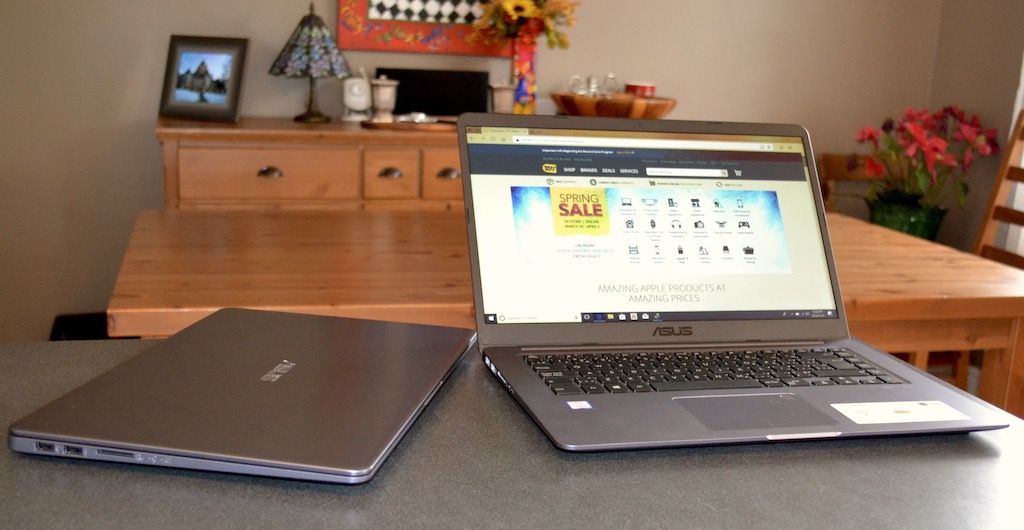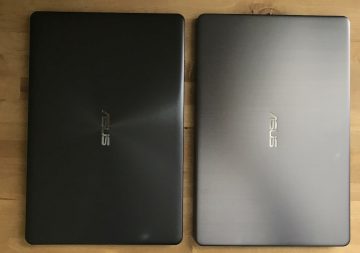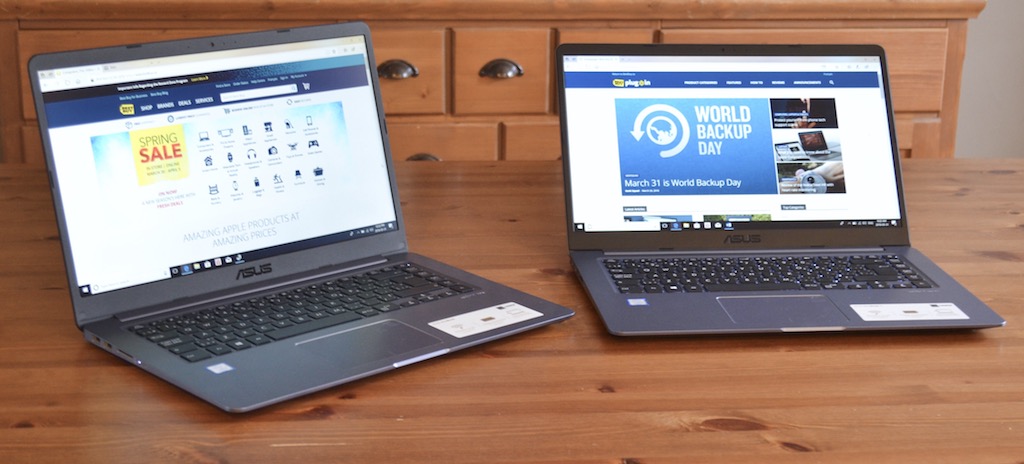 Looking for an affordable, slim yet full-sized laptop that would be a great for a student, or as a home PC? I just wrapped up a few weeks with two options from ASUS: the VivoBook X510U and the VivoBook S510U. As you may have guessed from the name, they are very similar. There are a few differences I’lll get into shortly, but both have the power, full-sized keyboard and 15.6-inch display needed to be solid choices for productivity. And both are thin and light enough to easily carry around.
Looking for an affordable, slim yet full-sized laptop that would be a great for a student, or as a home PC? I just wrapped up a few weeks with two options from ASUS: the VivoBook X510U and the VivoBook S510U. As you may have guessed from the name, they are very similar. There are a few differences I’lll get into shortly, but both have the power, full-sized keyboard and 15.6-inch display needed to be solid choices for productivity. And both are thin and light enough to easily carry around.
Easy Setup
One of the nice things about the current generation of laptops is that they’re easier than ever to set up. With Windows 10 and Cortana, you don’t even need to read any instructions—Cortana chats away and walks you through each step. The setup itself took just a few minutes. Budget a few hours of waiting for Windows downloads (you don’t need to babysit the laptop for this, but it does need to be done).
And if you want to go with biometric security instead of remembering a password, it took three or four minutes for Windows Hello to be happy with checking my fingerprint from every conceivable angle.
 Thin, Light and Plenty of Battery Life
Thin, Light and Plenty of Battery Life
Intel’s latest generation of mobile processors are more energy efficient than ever, allowing manufacturers to move to thinner form factors. This pair of ASUS laptops are each just 1.79 cm at their thickest point, and weigh only 1.5 kg. That’s within millimetres and grams of my 13-inch MacBook Air. One difference between the two models: the VivoBook X510U has a dark grey plastic case with a concentric pattern, while the VivoBook S510U has a silver, brushed metal case.
The VivoBooks also offer very good battery life, at up to eight hours on a charge. That’s not the all-day battery life that some laptops are hitting these days, but eight hours is plenty to get through a school day. The power adapter is also nice and compact, not one of the monster bricks that take up a huge amount of space on the floor. It would be nice if the prongs folded, but you can’t have everything …
No Shortage of Ports

ASUS included a full selection of ports, so no matter what accessories and peripherals you want to connect, you’re covered. There are a trio of standard USB ports (one is the ultra-fast USB 3.0) along with a next generation USB-C port. Also included are HDMI output for easy connection to a monitor or TV, and SD card slot and an audio jack for headphones.
ASUS VivoBook S510U and X510U Key Specs (as tested)
|
A Nice Display With Minimal Bezels
On a laptop in this price range, the display is usually not stellar. But the VivoBook’s is pretty good. It’s a full-sized 15.6-inches, so no squinting. Minimal bezels (I wouldn’t quite call them “NanoEdge” like ASUS does, but they are smaller than many) means the laptop is closer in size to a 14-inch model despite the larger display. It’s Full HD, treated to reduce glare and features 178-degree wide angle viewing. It is not touch-enabled.
The display worked well for streaming video, something that students will appreciate—especially if they live in a dorm or a share an apartment and don’t want to be tied to the communal TV.
Storage Options: Fast and Plentiful, or Wicked Fast
The VivoBook X510U and the VivoBook S510U differ in their storage options, but both offer advantages.
The more expensive S510U offers all solid state storage with a 256GB SSD. That makes for snappy system performance with fast data reading and writing as well.
The X510U has a Seagate FireCuda hybrid drive. This offers 1TB of traditional hard drive storage, so plenty of room for a big library of multimedia files but with significantly slower read/write speeds. But the FireCuda also has integrated solid state memory where the operating system is stored. That gives it the same fast system performance as an SSD. So you need to make a choice between fast system operation and lots of storage, or fast at everything but not as much capacity for big files.
 Perfect for Productivity
Perfect for Productivity
The combination of new Core i5 CPU, 8GB of RAM, full-sized keyboard and a big display make these laptops well-suited to productivity tasks. Working on assignments in Excel, Word or PowerPoint should be smooth sailing. Web browsing is snappy. However, with Intel integrated graphics this isn’t meant to be a gaming machine.
Another advantage of the S510U is its keyboard is backlit, a great feature if you’re using the laptop in dim lighting.
Is an ASUS VivoBook in Your Future?
As I mentioned in the intro, both of these laptops would make an excellent choice for a student, or a a general purpose home PC. They’re not made for video games or GPU-intensive tasks like editing 4K video, but for working in Microsoft Office, streaming video and web browsing, they’re more than capable. For the price, you get a lot of laptop.

The big question is probably which to model to pick. I prefer the S510U because I consider a backlit keyboard to be a virtual must-have feature, and the solid state storage makes loading and saving files faster. Its metal case also has a more premium feel. But the X510U will save some cash while offering the exact same display and CPU—and its 1TB FireCuda hybrid drive is the better choice if you plan to be storing a lot of big multimedia files.
You can check them both out at Best Buy, along with a huge selection of laptops, ultrabooks, 2-in-1s and MacBooks.




Hello there and thank you for the review – quite useful when going to buy a new one.
I do have a question regarding the display: is it LED or LCD? Or it could come in both versions? I just bought an X510U and on the box it is written: LCD: 15.6 FHD USLIM. Furthermore, I checked on ASUS web page the specifications for this model, and it is mentioned only LED backlit, no LCD at all.
It’s an LCD display with LED backlighting… LCD is the display panel itself, LED is the backlighting technology (as opposed to CCFL).
Comments are closed.